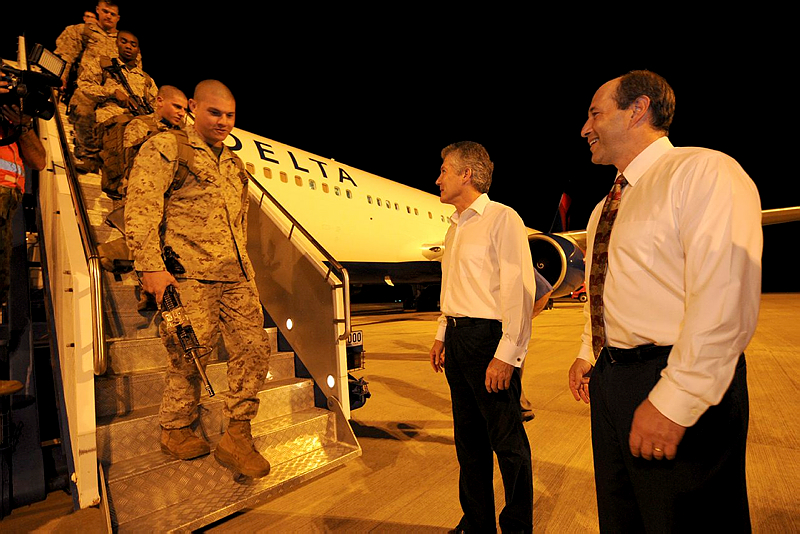
We’re in Washington this week for the
Alliance 21 project being run by the
US Studies Centre at the University of Sydney. It’s an interesting time to be in Washington. Over the next 24 hours the US budget negotiations will come to a head, potentially resulting in
substantial cuts to US defence spending by way of sequestration.
To say that the situation has the attention of American defence planners is putting it mildly. The prospective cuts to come are likely to be deep and potentially long-term. Civilians in the Pentagon could see their working days (and income) reduced, and service personnel are facing a period of reduced training and limited promotion opportunities. As grim as those possibilities are for the individuals concerned, the impact of most interest to Australia and other American allies and partners is the potential reduction in the preparedness and capability of America’s armed forces.
This possibility comes at a particularly unfortunate time as far as the United States’ pivot/rebalance to the Asia–Pacific is concerned. After talking a big game, there’s now a real question mark over their ability to follow through. Further cuts to US defence spending would likely have two major effects. First, the ability of US forces to substantially change their force structure, let alone ramp up numbers in the region, would be in doubt.
Moving forces around is expensive, especially when substantial facilities are required.
Second, and probably more importantly for Australia, sequestration would only make Washington even more eager for its partners in the Asia–Pacific to step up and provide some of the resources required to execute the US rebalance. Already, with sequestration only a possibility, it’s clear to us that there’s disappointment in Washington about the allied response to date—and Australia has been mentioned in this respect more than once.
To be fair, it’s not a case of finger wagging or reprimanding, and
Michael Green of CSIS provided the best one-liner of the week when he said that ‘Washington isn’t in a position to export political will at the moment, because there’s a deficit here as well’. Be that as it may, the fact is that America sees itself as the hardest working member of a team and it’s looking for a higher rate of effort from the rest.
For a variety of reasons, Australia is
unlikely to significantly increase its defence budget in the near term. But there are some things we can do at relatively little cost that will have the dual benefit of making the US rebalance a little easier for them while providing us an excellent return on investment, in terms of both security and alliance good will.
Back in November 2011, President Obama announced that, as
part of the rebalance, 2,500 USMC personnel would rotate through the North Territory on an ongoing basis. The footprint of such a force is substantial, and they’ll need facilities both for the Marines themselves, and also for the storage and maintenance of their equipment.
We’re in the early stages of building momentum in this initiative and it’s still very much a work in progress, with only 250 Marines involved in the first rotation. But the budget woes in Washington mean that the cost of proceeding is competing with a myriad of other calls on resources. The difficulty of getting that done has been mentioned to us more than once this week.
This is where the Australian Government could do its ally—and itself—a big favour by putting some money on the table to properly support the establishment and ongoing maintenance of the US training mission to Northern Australia. On the scale of defence expenditure it’s not a biggie, but it would send a clear signal that Australia is prepared to put some resources behind its public rhetoric in support of the rebalance.
That would make good sense for us strategically. An ongoing US presence in the Asia–Pacific is unambiguously in our interest; we get a security benefit from the alliance far in excess of our modest defence spending (presently 1.56% of GDP compared with America’s 4.7%). It follows that spending a little extra to help secure the presence of US forces in our region should be a no-brainer, even in a period of fiscal stringency.
Over forthcoming weeks, we’ll be running a series of posts based on various contributions to the Alliance 21 project.
Andrew Davies is a senior analyst for defence capability and executive editor of The Strategist
, and Mark Thomson is senior analyst for defence economics at ASPI. Image courtesy of Department of Defence. Print This Post
Print This Post